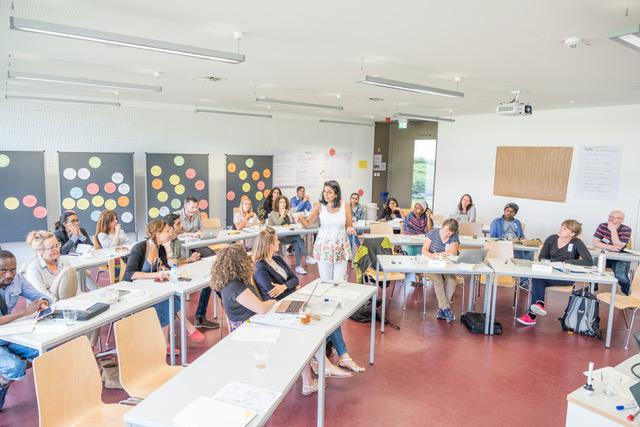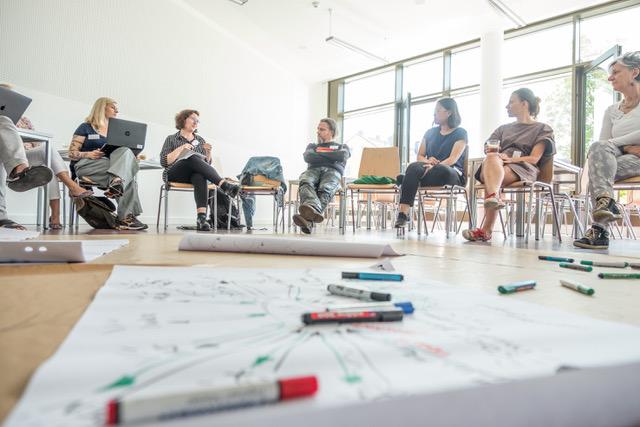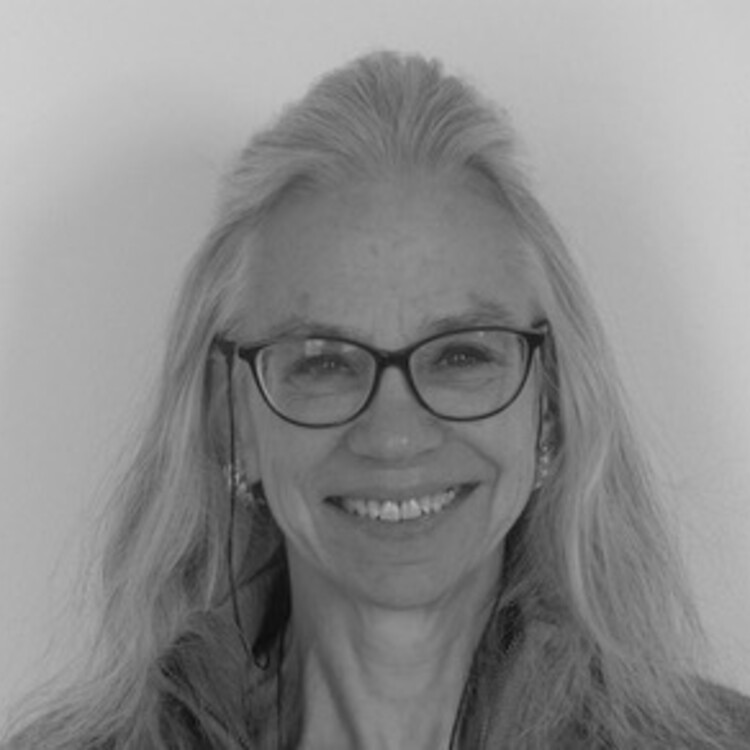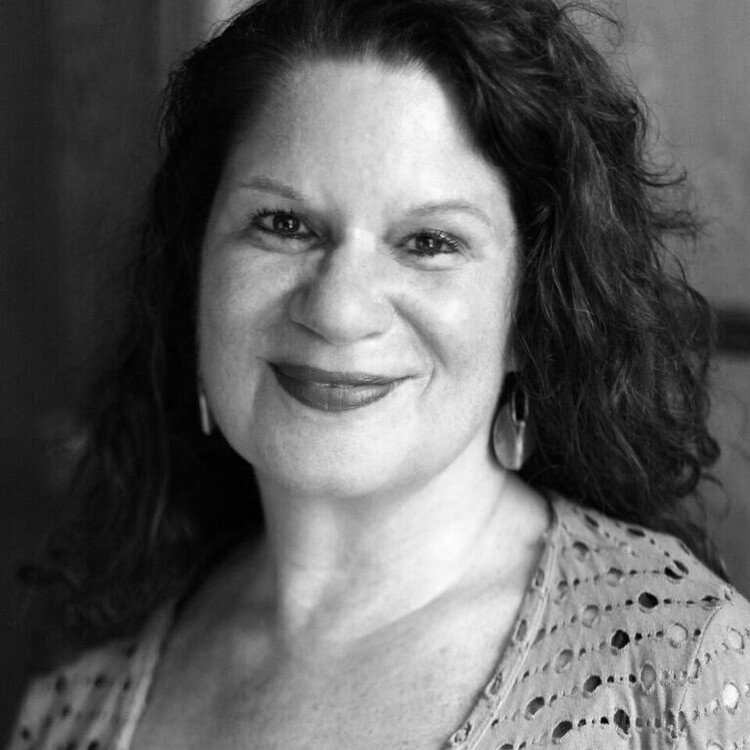Artistic Freedom
a Moveable Feast
Despite the excellent work of FreeMuse, PEN, ICORN, freeDimensional, and the Arts Rights Justice EU working group, we need more involvement from the general public and from artists in the free world. Some of the major issues we are dealing with in the field of artist rights and safety include reaching artists in peril, assisting artists to escape home country threats, coordinating placement and host options, supporting threatened artists (including legal, medical, educational, and artistic support), and spreading awareness to arts communities and beyond. This series will highlight the work that is being done around artist rights and safety in the theatre world, in the hopes that we can ignite dialogue, spark further exploration, and encourage more people to get involved in this growing field.—Jessica Litwak, series curator
What then is the role of art in a post-truth world?
We call it that, “post-truth,” but we should call it “lies”—an era where some people are not ashamed to openly lie for their own ends.
I do believe that the true nature of things comes out, and that’s why intentions in art are always revealed in the work. If artists are interested in their fellow humans and in this society, that will also come out in the work. I guess this interest is also called solidarity. Again, I don’t feel like artists should particularly be singled out, but we all need to question if we show enough solidarity with our fellow humans.
—Wolfgang Tillmans
We are living in a moment when many contemporary artists have turned to social engagement as an artistic form. Like philosophers, they bring into an investigative light the behaviors, words, and deeds that society is taking for granted.
Like journalists uncovering embarrassing or illegal activities, artists thus become targets for repression by those who do not want an informed, questioning public. In most parts of the world, there is a “battle of narratives” in the public space.
Freedom of expression as a concept has been around for a long time, but freedom specifically of artistic expression is relatively recent, although organizations such as PEN international or the UK’s Index on Censorship have been active for many years supporting writers. In 1998, Freemuse was founded, researching cases, advocating on behalf of censored, persecuted, and imprisoned musicians, and also negotiating behind the scenes for their freedom and safety. Freemuse is the only organization that publishes annual statistics on violations of freedom of artistic expression (for all art forms since 2014). Active since 1993, ICORN (the International Cities of Refuge Network) was established in 2006 and is now an international network of nearly seventy cities that host writers and other artists fleeing persecution. freeDimensional (since transitioned into ArtistSafety.net) was formed in 2006 as well—a ten-year project that matched artists-at-risk (as they are called) with artists’ residencies to host them in safety.
Artists-at-risk are those whose artwork speaks truth to power, upholds social justice ideals, and exercises human rights, and as a direct result, they see their human rights threatened, abused, or violated.
In 2017, Freemuse cited 533 cases in seventy-eight countries, saying, “This is only the tip of the iceberg”—there are many more that are unreported. Reported numbers are constantly rising, probably due to growing visibility of the phenomena. Although some artists are uneasy with the title, the recognition of artists as human rights defenders (HRDs) has been crucial, because human rights and freedom of expression NGOs have systems of monitoring abuses as well as support programs and funds to protect HRDs. Gradually, increasingly, artists, arts organizations, and individuals who support at-risk artists can access these systems and are setting up artists-at-risk-specific programs including funds, scholarships, or relocation to temporary safe residencies.
In 2013, a landmark report was presented to the UN by Farida Shaheed, then the UN Special Rapporteur in the Field of Cultural Rights. Her report, The Right to Freedom of Artistic Expression and Creation, highlights art’s specificities, among which:
…artists may entertain…, but they also contribute to social debates, sometimes bringing counter-discourses and potential counterweights to existing power centres. …contesting meanings and revisiting culturally inherited ideas and concepts…/… An artwork differs from non-fictional statements… interpretations given to an artwork do not necessarily coincide with the author’s intended meaning. Artistic expressions and creations … should not be reduced to be carrying a specific message or information.

Artists-at-risk are those whose artwork speaks truth to power, upholds social justice ideals, and exercises human rights, and as a direct result, they see their human rights threatened, abused, or violated. We use the umbrella term “censorship,” but there are several degrees, from the annoying to the deadly:
- A gallery or theatre decides to cancel an event due to public or private pressure.
- A sponsor withdraws a prize for an artist’s controversial work; public subsidy is cut or a city council cancels permission to use a studio or rehearsal space.
- The artist is put on a secret blacklist by the public authorities.
- A group threatens or destroys artworks, or blocks public entry to a theatre performance. Police use the excuse of protecting the public and force the closure of an event.
- Artists or their loved ones are threatened or physically harmed.
- Or the artists are simply murdered.
- Or they are arrested as a warning, or put in prison, or left in prison for years in the hope that their public will forget them.
- Indirect censorship can include loss of subsidy or sponsorship; loss of premises, loss of exhibitions or bookings; lack of police protection. Censorship of the market happens when publishers are afraid to publish or creating, maintaining and developing audiences are obstructed through bans of the work.
- Freedom of mobility is threatened when artists are denied visas or banned entry, as recently in the USA, and many face aggressive interrogation at airports.
There is increasing danger to artists on social media, with threats coming from those who disagree with them on issues their work speaks to (such as women’s rights, religion, rights of minorities, or political affiliation). Social media platforms themselves are guilty of censoring work that should be legally shown.
Finally, self-censorship is abundant where and when artists feel threatened. In 2015, “almost half of the 2,900 Swedish artists who responded to a questionnaire had experienced threats and violence due to their work, mainly by ‘right-wing extremists and racists,’ and a third had withdrawn from the public domain or abandoned certain themes” (Swedish Agency for Cultural Policy Analysis, 2016).
The State is charged with protecting and defending the rights it has put into law, yet the State is the perpetrator in the majority of violations—by failing to enforce international laws they have signed, failing to protect artists or failing to punish those who repress artists. Non-State perpetrators include:
- educational institutions (firing teachers)
- mass media, broadcasting, telecommunications, and production companies (not diffusing work)
- unions (prohibiting an artist from working by denying membership)
- armed extremists, organized crime (drug mafia and gangs)
- religious authorities, traditional leaders
- corporations, distribution companies and retailers, sponsors (big multinationals suing artists for breach of copyright)
- civil society groups, associations, and so on (censorship of the mob, street censorship)
Governments use various laws as pretexts to silence artists:
- Sedition, anti-discrimination, or hate speech
- Terrorism
- Disturbance of the public order
- Blasphemy (in Myanmar, a café owner from New Zealand was sentenced to two-and-a-half years’ imprisonment and hard labour for insulting Buddhism by using an image of Buddha wearing headphones in a post on Facebook.)
- New laws against fake news
- Obscenity: in the USA, religious groups have tried to cover up nude statures in public parks
In her 2017 report on the contribution of artistic and cultural initiatives to creating and developing right-respecting societies, the current UN Special Rapporteur in the field of cultural rights Karima Bennoune states that abuses,
Often involve attempts at cultural engineering aimed at redesigning culture based on monolithic world views, focused on ‘purity’ and enmity toward ‘the other,’ policing ‘honour’ and ‘modesty,’ claiming cultural and moral superiority, imposing a claimed ‘true religion’ or ‘authentic culture’ along with dress and behavior codes often alien to the lived cultures of local populations, stifling freedom of artistic expression and curtailing scientific freedom.
There is widespread ignorance of what is actually permitted or prohibited legally. Artists and arts professionals do not fully understand the law. Often international law has been ratified but is not enforced, or there are still national laws in the books that actually contravene international law—which, by the way, takes precedence over national legislation when ratified by a country.
The State is charged with protecting and defending the rights it has put into law, yet the State is the perpetrator in the majority of violations—by failing to enforce international laws they have signed, failing to protect artists or failing to punish those who repress artists.
And, of course, the general public hardly ever understands what is legally permitted and because arts organizations have not worked to deepen their understanding, the public is often unsympathetic to the artist or art work. In almost all cases of public demonstrations against an art work, the demonstrators have not read the book, nor seen the play or movie, nor taken the opportunity to understand the artist’s intention in making the work. The general public can be our biggest threat or our most solid support. When incited by populists, they can protest blindly, manipulated by fear, hatred, or their own existential frustrations. Yet they can also stand up for “their” local arts organization. Dialoguing deeply with audiences well before any controversy arises is clearly a responsibility of arts organizations all over the world today, and some museum directors in the USA are calling for more action in this regard.
In a few countries, specialist lawyers, associations, or organizations defend the arts and artists against illegal violations of freedom of expression. It is crucial that lawyers and judges everywhere become more informed.
States, police, or other public services responsible for protecting freedom of expression often demonstrate ignorance of the law, wrong interpretation, or wilful transgression. Imprecise and undefined legal concepts such as insult, glorifying terrorism, or blasphemy are cited inaccurately. Although Iceland, Malta, and Denmark have all recently removed their national laws against blasphemy, UNESCO reports that “…insult to religion and blasphemy, as well as perceived transgressions of traditional and conservative values, accounted for over a third of court cases against artists worldwide in 2016.”
The laws state that everyone, everywhere, no matter what their political or religious persuasion, has the right:
- To hold opinions
- To receive and share information and ideas
- To express, seek out, find and access opinions (in certain conditions, including those which others might find offensive)
International conventions include freedom of thought, conscience, and religion but also the right to peaceful assembly; freedom of association; the right to form and join trade unions; to benefit from the protection of the moral and material interests resulting from any literary or artistic production of which a person is the author; the right to leisure (the rights of children include the right to play).

Freedom of artistic expression is included in many of the United Nations’ international legal instruments ratified by many countries around the world. They include the Universal Declaration of Human Rights 1948; International Conventions on Civil and Political Rights (ICCPR) and on Economic, Social and Cultural Rights (ICESCR) from 1996; Convention on the Elimination of Racial Discrimination (CERD)1969 and several others. In 2005 UNESCO published its first Global Report on the Protection and Promotion of the Diversity of Cultural Expressions, monitored and updated with a “global report” every two years. In its most recent Global Report, Chapter 10, Promoting the Freedom to Imagine and Create, focuses on freedom of artistic expression. Signatories to the 2005 UNESCO cultural diversity convention are asked to go further than mere protection, and to actively enact supportive policies and funding.
Although the rising interest in protecting and defending freedom of artistic expression is absolutely to be welcomed, there is still much to do to develop public understanding and support, as well as informing professionals in the arts and legal sectors.
On a regional level, in the EU there are several references including the EU Guidelines on Freedom of Expression Online and Offline from 2014. These EU guidelines play an important role, not only in EU Member countries but also for EU delegations and diplomats stationed in non-EU countries. Artists are explicitly mentioned in the definition of human rights defenders in the texts.
Of course, artists are not obliged to offend, insult, or provoke, just as audiences are not obliged to see the work, read it or listen to it. Many are surprised to learn that it is permissible to insult or offend. Why? Because such accusations are subjective: what may be insulting or offensive to one person may not be at all upsetting to another. The laws were formulated to protect someone expressing their freedom of opinion from, for example, governments, extremists, or social groups who merely do not like those opinions. International law has thus set a number of tests to ascertain if the suppression of free speech is legitimate or not.
There are tests for the legality and necessity of suppression, and to assess the proportionality of the action taken. The context of an insult will be examined by lawyers according to seven factors:
- what was said,
- who said it and to whom,
- how was it said,
- when was it said,
- where it was said,
- what intent the speaker had, and
- what impact the statement had (Article 19)
This article cannot trace the history of the emergence of arts-specific initiatives, but we can briefly describe the main essential responses: advocacy (public and private); relocation to safe places; emergency funds to assist in the costs of relocation, lawyers and medical support; and training for the arts sector, activists, lawyers and jurists, and NGOs.
Several new initiatives have been recently founded or funded, such as ARC, the Artists at Risk Connection, based in New York at PEN America that features a database of organizations that assist artists at risk, or the Artists Protection Fund, also based in New York, that, like ICORN, places artists in safe residencies or universities. Free speech advocates are starting to support artists although the big NGOs tend to focus only on the most famous cases. More artists residencies are offering to host artists-at-risk, although the residency period needs to be longer than usual and residency staff require training to psychologically and professionally support the artist. These programs usually include formal “verification” to ascertain if the story of the defender is legitimate and the degree of danger is serious. But we are also finally beginning to look into the importance of supporting the relocated artist to integrate fully in their new life and work environment. Still, relocation or international advocacy campaigns treat symptoms. The causes are more deeply rooted in societies.
There are also some good models such as Index on Censorship’s “Law Packs"—online booklets created by artists, lawyers, and the police that outline the most common legal accusations against artists, how artists can prepare and protect themselves, what the law actually says and guarantees, how to approach the police if necessary. The Law Packs only refer to UK law but they are an excellent model that other countries could adapt.
Another good initiative is the annual ARJ (Arts-Rights-Justice) Academy at the University of Hildesheim in Germany. It brings together arts associations or organizations, artists, lawyers, human rights, and free speech NGOs to share knowledge and expertise.
Emergency Funds to assist in relocation, legal and medical costs for verified cases are accessible by artists-at-risk, sometimes in collaboration with their hosts. EU ProtectDefenders is a consortium of twelve HRs NGOs working internationally funded by the European Commission. From the USA, Freedom House runs similar international programs and there are other activist support organizations that may support artists, specifically for women, or other targeted defenders, such as LGBTQI advocates.
Although the rising interest in protecting and defending freedom of artistic expression is absolutely to be welcomed, there is still much to do to develop public understanding and support, as well as informing professionals in the arts and legal sectors. Let’s face it, it would be better if we did not even have to relocate artists or defend artistic freedom because the popular and legislative climates in our countries were favorable. As Tillmans points out to those of us in the arts sector, it’s all about solidarity.



Comments
The article is just the start of the conversation—we want to know what you think about this subject, too! HowlRound is a space for knowledge-sharing, and we welcome spirited, thoughtful, and on-topic dialogue. Find our full comments policy here